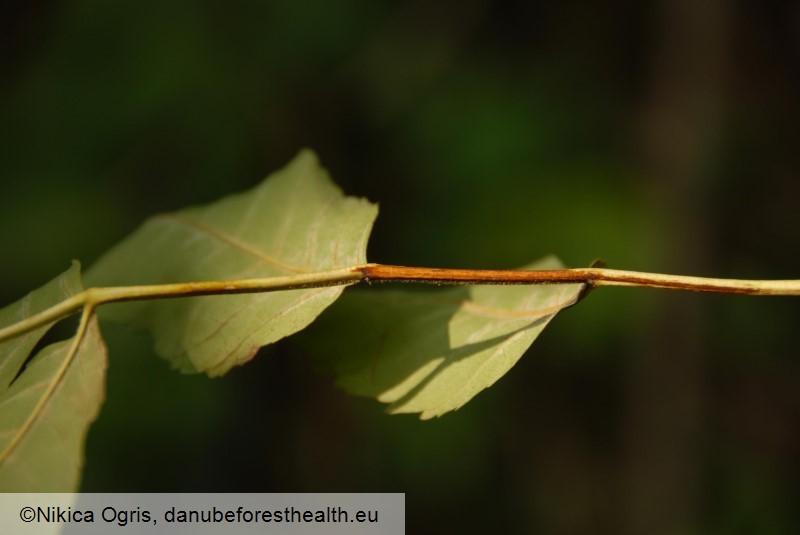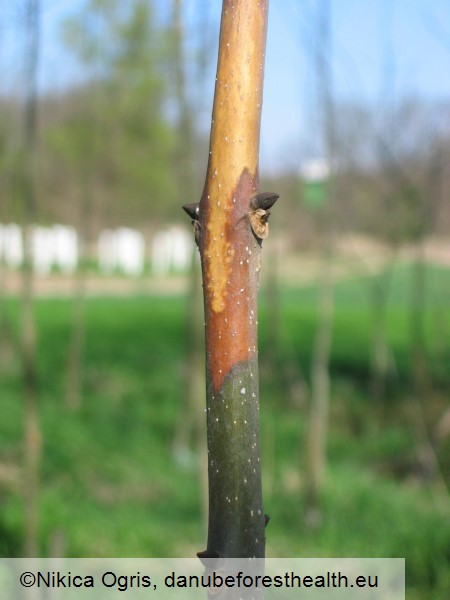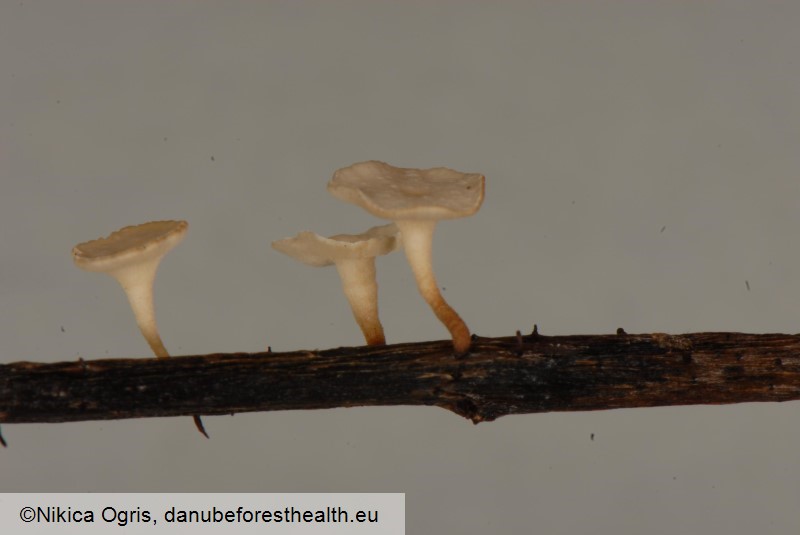Fungi
Ash dieback
Hymenoscyphus fraxineus
Nikica Ogris, Thomas Cech
|
|

Fig. 1. Necroses on leaves and leaf rachises

Fig. 2. Wilting of ash

Fig. 3. Necrosis in the bark

Fig. 4. Crown dieback of ash

Fig. 5. Discoloration of wood

Fig. 6. Fruiting bodies – apothecia on previous year leaf rachises
DETECTION PERIOD:
whole year
DESCRIPTION:
The fungus enters the host through leaves and leaf rachises where it causes lesions (Fig. 1). Ash leaves wilt (Fig. 2) due to an extensive and fast-growing necrosis in the bark (Fig. 3). Shoots and branches die (Fig. 4). The fungus spreads also in the wood where it causes brown discoloration (Fig. 5). The infected leaves are shed prematurely, sometimes already in August. Rarely canker also develop around stubs of branches. Fruiting bodies (apothecia) develop on the previous’ year rachises during summer (Fig. 6).
HABITAT:
The disease affects mainly Fraxinus excelsior and F. angustifolia, while F. ornus is only minorly affected.
STATUS:
Spread in the whole Danube region.
IMPACT:
Varying degrees of resistance of ash trees to H. fraxineus-ash dieback has been discovered. However, the abundance of resistance is rather low (around 1% on average). The usual presence of strongly varying degrees of infection in European forests is likely also a consequence of varying infection conditions strongly affected by climate and abundance of ashes in a stand. Generally, the youngest trees are the most damaged ones and die quickly, old trees can die within a few years, or only individual shoots die back, and the tree is repeatedly weakened by the dieback and slowly declines during many years. A quite recent phenomenon is the widespread increase in root- and butt-rot of adult ashes caused by a number of fungal species obviously benefitting from the multiannual weakening of the ashes by the dieback (see below).
SIMILAR SPECIES:
Ash trees commonly die as a consequence of Armillaria sp. infections causing a white rot. More rarely but regionally common butt rot seems to be associated with the ascomycete Xylaria polymorpha with irregular club-shaped or lump-shaped, brown to black fruiting bodies. Canker on ash tree can be caused by Neonectria ditissima. Ash trees can be weakened or attacked by Leperesinus fraxini. Bark necrosis can be a result of the facultative parasites as Botryosphaeria stevensii, Diplodia fraxini, and Diplodia subglobosa.
|